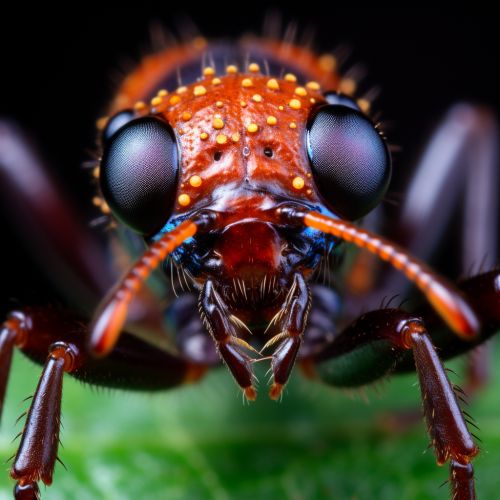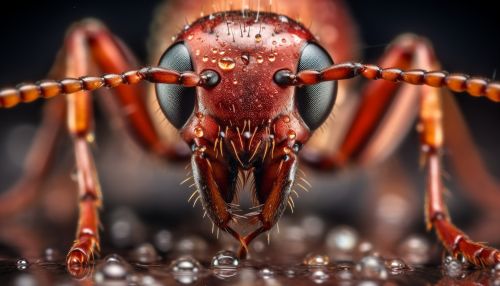Ants
Introduction
Ants are eusocial insects of the family Formicidae, and along with the related wasps and bees, they belong to the order Hymenoptera. They are known for their highly organized colonies and nests, which sometimes consist of millions of individuals.


Evolution and Classification
The evolutionary history of ants dates back to the Cretaceous period, approximately 140 to 165 million years ago. They are descendants of a lineage within the aculeate wasps, and a 2013 study suggests that they are a sister group of the Apidae, a major family of bees.
Anatomy
Ants have a complex anatomical structure, which is divided into three segments: the head, the thorax, and the abdomen. The head contains many important parts of an ant's body, including the eyes, antennae, and mandibles.
Behavior and Ecology
Ants exhibit a wide range of behaviors and ecological roles. They can be predators, scavengers, or even farmers, and their behaviors can vary greatly depending on their species and environmental factors.
Ant Society
Ants live in highly structured social colonies, each of which is run by a queen ant. Worker ants are responsible for food gathering, nest maintenance, and defense, while the queen's primary role is reproduction.
Interaction with Humans
Ants and humans interact in a variety of ways. In some cultures, ants are used in traditional medicine or consumed as food. However, they can also be pests, damaging crops and invading homes.
Conservation
While many ant species are not threatened, some are endangered or at risk due to habitat loss, climate change, and other human activities.
